Shavika Rastogi
Neuromorphic circuit for temporal odor encoding in turbulent environments
Dec 28, 2024Abstract:Natural odor environments present turbulent and dynamic conditions, causing chemical signals to fluctuate in space, time, and intensity. While many species have evolved highly adaptive behavioral responses to such variability, the emerging field of neuromorphic olfaction continues to grapple with the challenge of efficiently sampling and identifying odors in real-time. In this work, we investigate Metal-Oxide (MOx) gas sensor recordings of constant airflow-embedded artificial odor plumes. We discover a data feature that is representative of the presented odor stimulus at a certain concentration - irrespective of temporal variations caused by the plume dynamics. Further, we design a neuromorphic electronic nose front-end circuit for extracting and encoding this feature into analog spikes for gas detection and concentration estimation. The design is inspired by the spiking output of parallel neural pathways in the mammalian olfactory bulb. We test the circuit for gas recognition and concentration estimation in artificial environments, where either single gas pulses or pre-recorded odor plumes were deployed in a constant flow of air. For both environments, our results indicate that the gas concentration is encoded in -- and inversely proportional to the time difference of analog spikes emerging out of two parallel pathways, similar to the spiking output of a mammalian olfactory bulb. The resulting neuromorphic nose could enable data-efficient, real-time robotic plume navigation systems, advancing the capabilities of odor source localization in applications such as environmental monitoring and search-and-rescue.
The Neuromorphic Analog Electronic Nose
Oct 24, 2024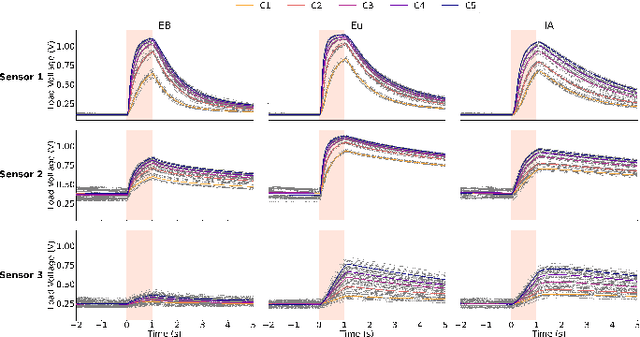
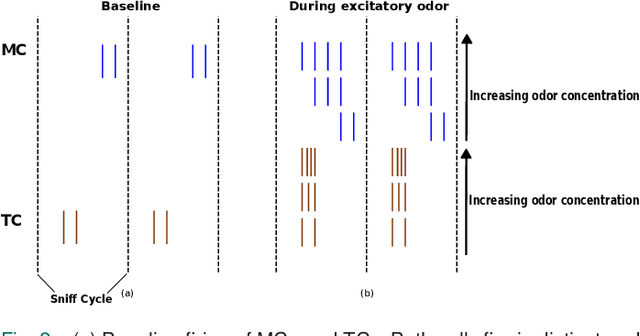
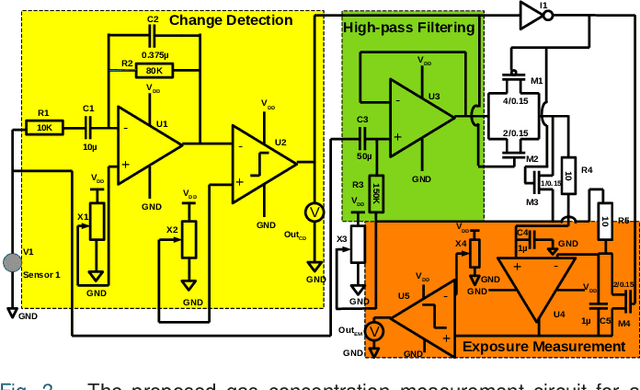
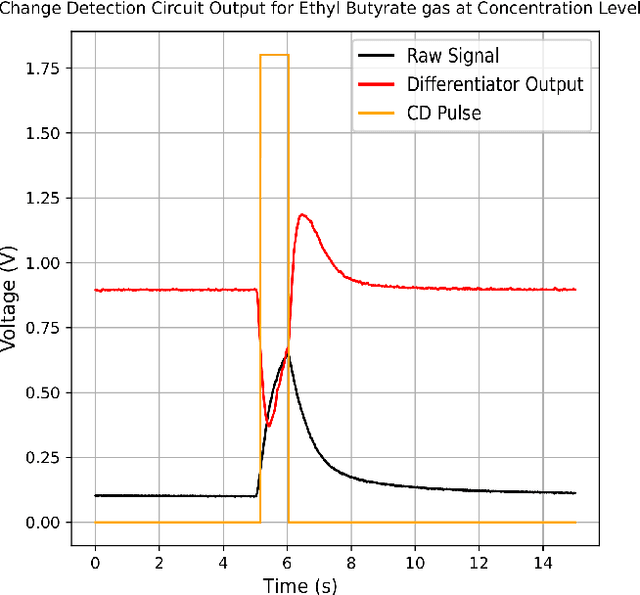
Abstract:Rapid detection of gas concentration is important in different domains like gas leakage monitoring, pollution control, and so on, for the prevention of health hazards. Out of different types of gas sensors, Metal oxide (MOx) sensors are extensively used in such applications because of their portability, low cost, and high sensitivity for specific gases. However, how to effectively sample the MOx data for the real-time detection of gas and its concentration level remains an open question. Here we introduce a simple analog front-end for one MOx sensor that encodes the gas concentration in the time difference between pulses of two separate pathways. This front-end design is inspired by the spiking output of a mammalian olfactory bulb. We show that for a gas pulse injected in a constant airflow, the time difference between pulses decreases with increasing gas concentration, similar to the spike time difference between the two principal output neurons in the olfactory bulb. The circuit design is further extended to a MOx sensor array and this sensor array front-end was tested in the same environment for gas identification and concentration estimation. Encoding of gas stimulus features in analog spikes at the sensor level itself may result in data and power-efficient real-time gas sensing systems in the future that can ultimately be used in uncontrolled and turbulent environments for longer periods without data explosion.
High-speed odour sensing using miniaturised electronic nose
Jun 04, 2024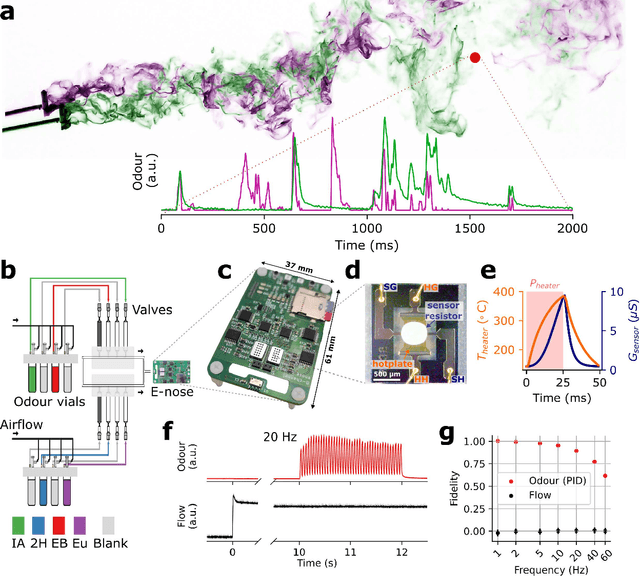

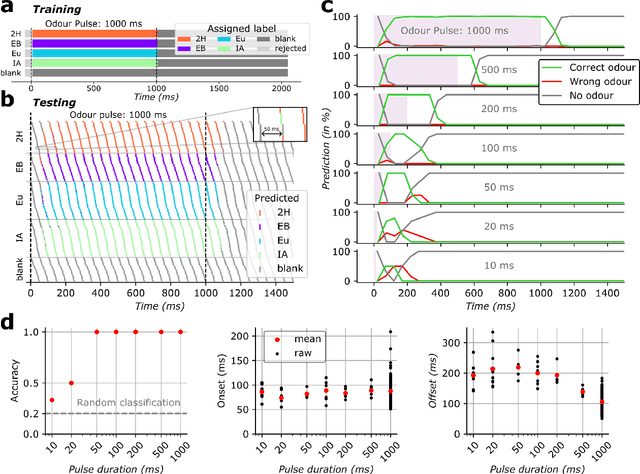
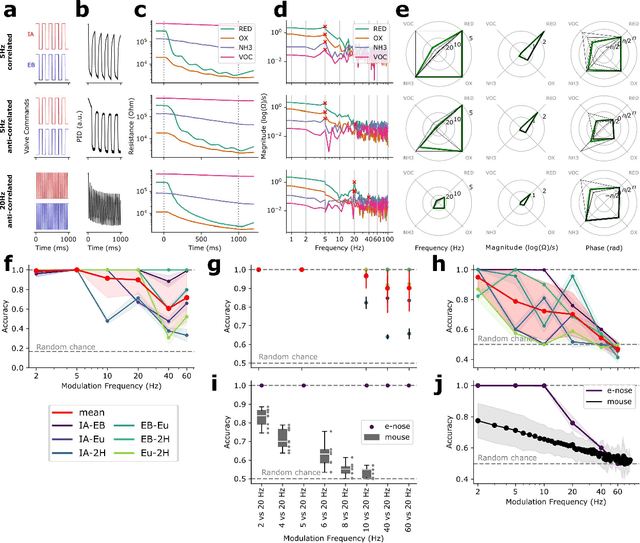
Abstract:Animals have evolved to rapidly detect and recognise brief and intermittent encounters with odour packages, exhibiting recognition capabilities within milliseconds. Artificial olfaction has faced challenges in achieving comparable results -- existing solutions are either slow; or bulky, expensive, and power-intensive -- limiting applicability in real-world scenarios for mobile robotics. Here we introduce a miniaturised high-speed electronic nose; characterised by high-bandwidth sensor readouts, tightly controlled sensing parameters and powerful algorithms. The system is evaluated on a high-fidelity odour delivery benchmark. We showcase successful classification of tens-of-millisecond odour pulses, and demonstrate temporal pattern encoding of stimuli switching with up to 60 Hz. Those timescales are unprecedented in miniaturised low-power settings, and demonstrably exceed the performance observed in mice. For the first time, it is possible to match the temporal resolution of animal olfaction in robotic systems. This will allow for addressing challenges in environmental and industrial monitoring, security, neuroscience, and beyond.
Spike-time encoding of gas concentrations using neuromorphic analog sensory front-end
Oct 11, 2023Abstract:Gas concentration detection is important for applications such as gas leakage monitoring. Metal Oxide (MOx) sensors show high sensitivities for specific gases, which makes them particularly useful for such monitoring applications. However, how to efficiently sample and further process the sensor responses remains an open question. Here we propose a simple analog circuit design inspired by the spiking output of the mammalian olfactory bulb and by event-based vision sensors. Our circuit encodes the gas concentration in the time difference between the pulses of two separate pathways. We show that in the setting of controlled airflow-embedded gas injections, the time difference between the two generated pulses varies inversely with gas concentration, which is in agreement with the spike timing difference between tufted cells and mitral cells of the mammalian olfactory bulb. Encoding concentration information in analog spike timings may pave the way for rapid and efficient gas detection, and ultimately lead to data- and power-efficient monitoring devices to be deployed in uncontrolled and turbulent environments.
Braille Letter Reading: A Benchmark for Spatio-Temporal Pattern Recognition on Neuromorphic Hardware
May 30, 2022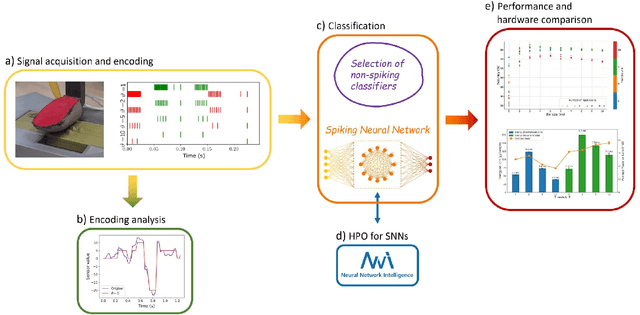
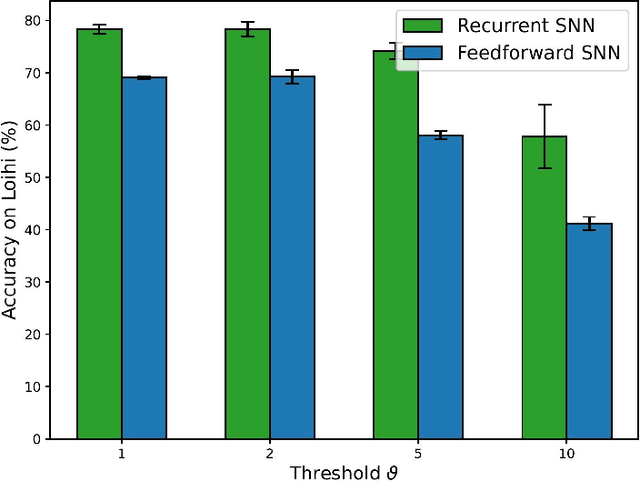
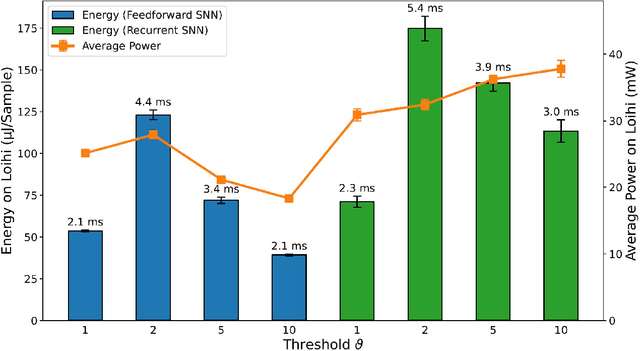

Abstract:Spatio-temporal pattern recognition is a fundamental ability of the brain which is required for numerous real-world applications. Recent deep learning approaches have reached outstanding accuracy in such tasks, but their implementation on conventional embedded solutions is still very computationally and energy expensive. Tactile sensing in robotic applications is a representative example where real-time processing and energy-efficiency are required. Following a brain-inspired computing approach, we propose a new benchmark for spatio-temporal tactile pattern recognition at the edge through braille letters reading. We recorded a new braille letters dataset based on the capacitive tactile sensors/fingertip of the iCub robot, then we investigated the importance of temporal information and the impact of event-based encoding for spike-based/event-based computation. Afterwards, we trained and compared feed-forward and recurrent spiking neural networks (SNNs) offline using back-propagation through time with surrogate gradients, then we deployed them on the Intel Loihi neuromorphic chip for fast and efficient inference. We confronted our approach to standard classifiers, in particular to a Long Short-Term Memory (LSTM) deployed on the embedded Nvidia Jetson GPU in terms of classification accuracy, power/energy consumption and computational delay. Our results show that the LSTM outperforms the recurrent SNN in terms of accuracy by 14%. However, the recurrent SNN on Loihi is 237 times more energy-efficient than the LSTM on Jetson, requiring an average power of only 31mW. This work proposes a new benchmark for tactile sensing and highlights the challenges and opportunities of event-based encoding, neuromorphic hardware and spike-based computing for spatio-temporal pattern recognition at the edge.
Drift in a Popular Metal Oxide Sensor Dataset Reveals Limitations for Gas Classification Benchmarks
Aug 19, 2021
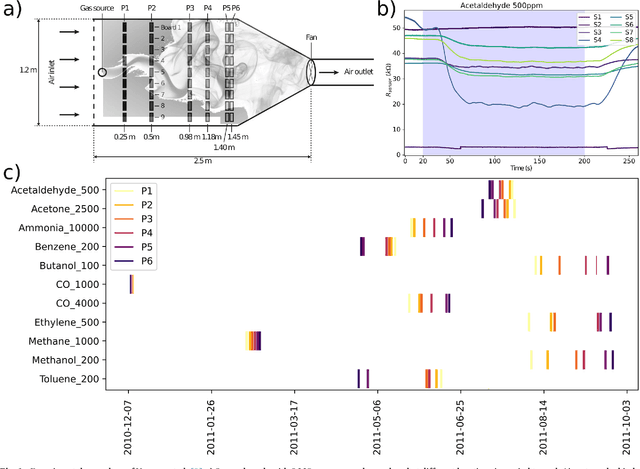
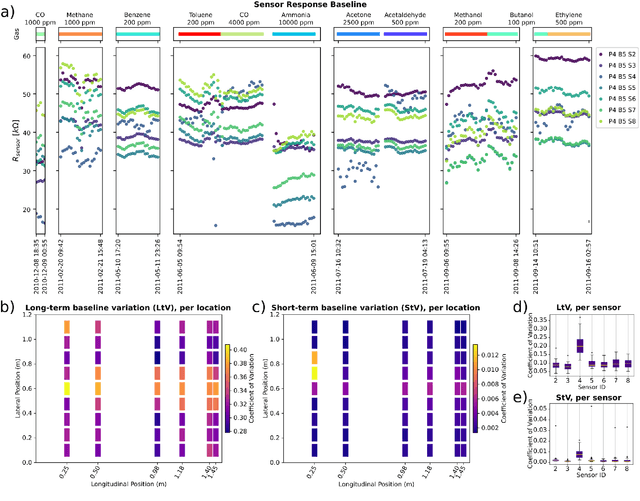
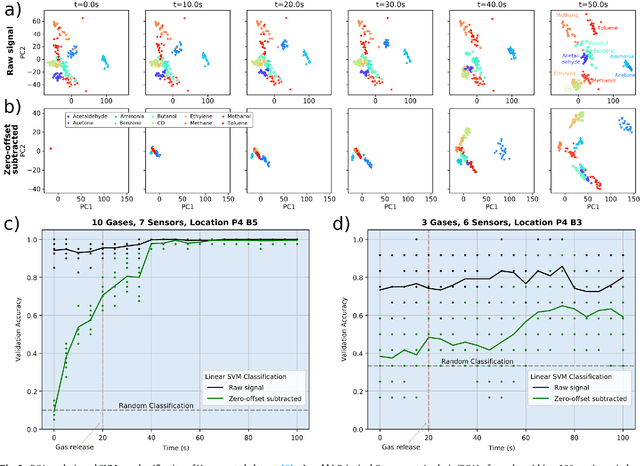
Abstract:Metal oxide (MOx) electro-chemical gas sensors are a sensible choice for many applications, due to their tunable sensitivity, their space-efficiency and their low price. Publicly available sensor datasets streamline the development and evaluation of novel algorithm and circuit designs, making them particularly valuable for the Artificial Olfaction / Mobile Robot Olfaction community. In 2013, Vergara et al. published a dataset comprising 16 months of recordings from a large MOx gas sensor array in a wind tunnel, which has since become a standard benchmark in the field. Here we report a previously undetected property of the dataset that limits its suitability for gas classification studies. The analysis of individual measurement timestamps reveals that gases were recorded in temporally clustered batches. The consequential correlation between the sensor response before gas exposure and the time of recording is often sufficient to predict the gas used in a given trial. Even if compensated by zero-offset-subtraction, residual short-term drift contains enough information for gas classification. We have identified a minimally drift-affected subset of the data, which is suitable for gas classification benchmarking after zero-offset-subtraction, although gas classification performance was substantially lower than for the full dataset. We conclude that previous studies conducted with this dataset very likely overestimate the accuracy of gas classification results. For the 17 potentially affected publications, we urge the authors to re-evaluate the results in light of our findings. Our observations emphasize the need to thoroughly document gas sensing datasets, and proper validation before using them for the development of algorithms.
 Add to Chrome
Add to Chrome Add to Firefox
Add to Firefox Add to Edge
Add to Edge